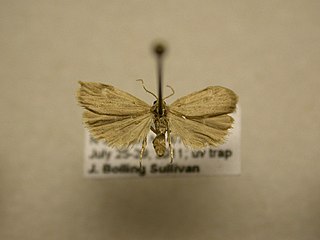
Roberto Carlos da Silva Rocha, commonly known as Roberto Carlos, is a Brazilian former professional footballer who now works as a football ambassador. He started his career in Brazil as a forward but spent most of his career as a left back and has been described as the "most offensive-minded left-back in the history of the game". Carlos is also widely considered one of the best left backs in history, and was also known as a free-kick specialist throughout his career—his bending shots have measured at over 105 miles per hour (169 km/h). In 1997, he was runner-up in the FIFA World Player of the Year. He was chosen on the FIFA World Cup Dream Team, and in 2004 was named by Pelé in the FIFA 100 list of the world's greatest living players.

Roberto Burle Marx was a Brazilian landscape architect whose designs of parks and gardens made him world-famous. He is accredited with having introduced modernist landscape architecture to Brazil. He was known as a modern nature artist and a public urban space designer. His work had a great influence on tropical garden design in the 20th century. Water gardens were a popular theme in his work. He was deftly able to transfer traditional artistic expressions such as graphic design, tapestry and folk art into his landscape designs. He also designed fabrics, jewellery and stage sets.
The 1971 Pittsburgh Pirates season was the 90th season for the Pittsburgh Pirates franchise; their 85th in the National League. It involved the Pirates finishing first in the National League East with a record of 97 wins and 65 losses. They defeated the San Francisco Giants three games to one in the National League Championship Series and beat the Baltimore Orioles four games to three in the World Series. The Pirates were managed by Danny Murtaugh, and played their first full season at Three Rivers Stadium, which had opened in July the year before.

Crambidia is a genus of moths in the family Erebidae. The genus was described by Packard in 1864.
Grupo Globo, also known as Organizações Globo, is the largest mass media group of Latin America, founded in Rio de Janeiro, Brazil, in 1925 by Irineu Marinho. It also formerly owned companies in the food industry, real estate and financial markets.

Roberto Firmino Barbosa de Oliveira is a Brazilian professional footballer who plays as a forward or attacking midfielder for Premier League club Liverpool and the Brazil national team.

Roberto Carballés Baena is a Spanish tennis player. He achieved a career-high ATP singles ranking of world No. 72 in February 2018. He reached the semifinals at Casablanca as a qualifier in 2014. His favourite surface is clay, on which he has won one ATP title.

Crambidia pallida, the pale lichen moth, is a moth of the family Erebidae. It was described by Packard in 1864. It is found from Nova Scotia to Florida, west to Texas and north to North Dakota and Manitoba. The habitat consists of forests and woodlands.

Crambidia lithosioides, the dark gray lichen moth, is a moth of the family Erebidae. It was described by Harrison Gray Dyar Jr. in 1898. It is found in the United States from North Carolina to Florida and from Kentucky to Mississippi.
Crambidia uniformis, the uniform lichen moth, is a moth of the family Erebidae. It was described by Harrison Gray Dyar Jr. in 1898. It is found from eastern North America, including Alabama, Florida, Georgia, Indiana, Iowa, Kentucky, Maryland, North Carolina, Ohio, Oklahoma, South Carolina, Tennessee and West Virginia.

Crambidia casta, the pearly-winged lichen moth, is a moth of the family Erebidae. It was described by Packard in 1869. It is found from North Carolina and Kentucky north to Nova Scotia. In the west it occurs from the Rocky Mountain states south to central Arizona and New Mexico. The habitat consists of eastern hardwood forests, juniper woodlands and sagebrush rangelands
Crambidia cephalica, the yellow-headed lichen moth, is a moth of the family Erebidae. It was described by Augustus Radcliffe Grote and Coleman Townsend Robinson in 1870. It is found in the central and southern part of the United States, from eastern Nevada, Utah and Arizona to southern Ohio, Tennessee, North Carolina and northern Georgia. The habitat consists of steppes and open forests.
Crambidia scoteola is a moth of the family Erebidae. It was described by George Hampson in 1900. It is found in Bolivia.
Crambidia dusca is a moth of the family Erebidae. It was described by William Barnes and James Halliday McDunnough in 1913. It is found in North America, where it has been recorded from California and Ontario.
Crambidia myrlosea is a moth of the family Erebidae. It was described by Harrison Gray Dyar Jr. in 1917. It is found from the US states of New Mexico, Texas and Arizona, south to Belize.
Crambidia suffusa is a moth of the family Erebidae. It was described by William Barnes and James Halliday McDunnough in 1912. It is found in the US state of California.
Crambidia impura is a moth of the family Erebidae. It was described by William Barnes and James Halliday McDunnough in 1913. There are two disjunct populations. It has been recorded from southern Rocky Mountain states, the Yukon and northern British Columbia and Alberta. The habitat consists of stabilized sand dunes dominated by open jack pine forests.
Crambidia cinnica is a moth of the family Erebidae. It was described by Schaus in 1924. It is found in Mexico.
The Lithosiina are a subtribe of lichen moths in the family Erebidae. The taxon was erected by Gustaf Johan Billberg in 1820.






